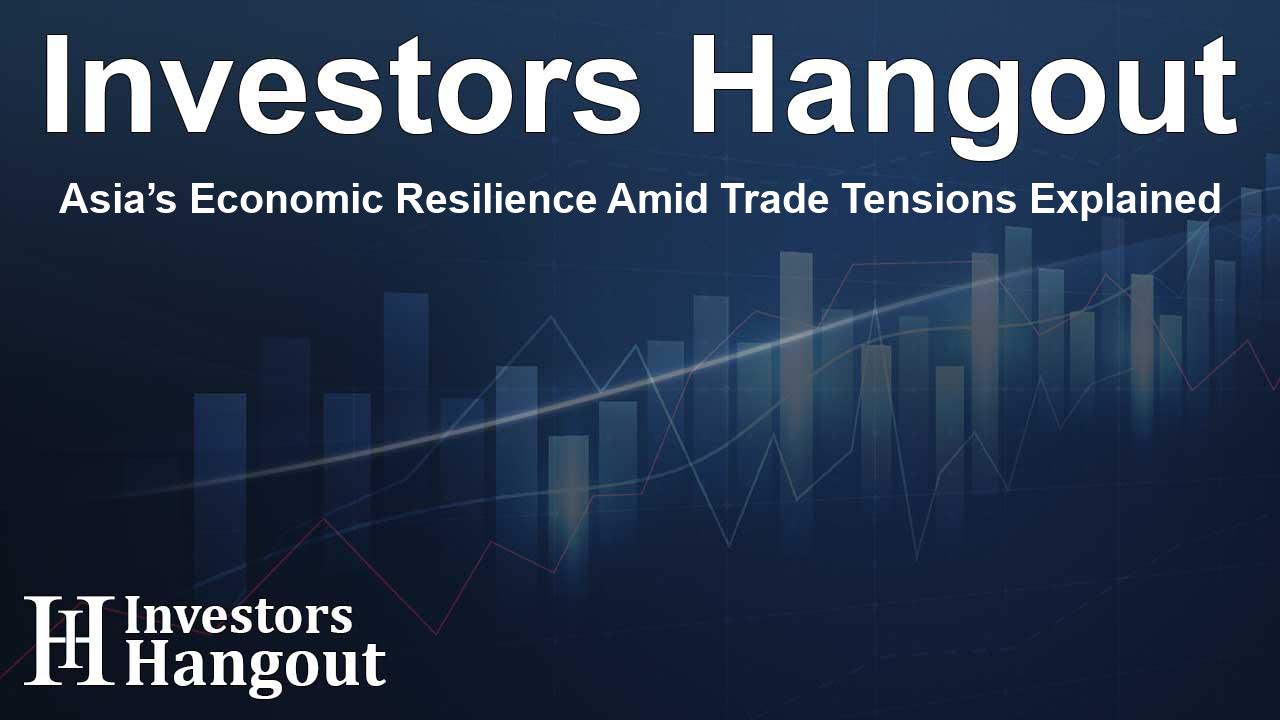Asia’s Economic Resilience Amid Trade Tensions Explained

Asia’s Economic Resilience Amid Trade Tensions
The potential return of Donald Trump to the White House is stirring conversations about renewed trade tensions, inflation spikes, and market fluctuations. Analysts from UBS suggest that tariffs on imports, especially those from China, could bring considerable risks to the global economy.
Understanding Asia’s Position
Despite looming challenges, researchers believe that Asia is better prepared to handle these impacts than it was during the trade conflicts of 2018-2019. This readiness stems from improved supply chain integration, enhanced regional economic growth, and new opportunities in sectors like artificial intelligence and greentech.
Projected Tariffs and Economic Effects
UBS forecasts a scenario in which Trump’s administration may elevate tariffs on Chinese products to as much as 60% by 2026. Such measures could lead to a significant slowdown in China’s GDP growth, potentially dragging it down by 200-300 basis points. However, they anticipate that a strong fiscal stimulus from China, estimated at CNY 5-8 trillion, could buffer some of these adverse effects, sustaining growth in the mid-4% range.
China’s Strategic Responses
In the face of potential tariffs, UBS predicts that China will employ strategic retaliatory actions and bolster trade with non-US partnerships, aiding in limiting the overall impact on its economy.
Broader Implications for the Region
When considering the broader Asian landscape, growth in the region is expected to decelerate slightly in 2025 as tariffs come into play. Vulnerabilities are more pronounced in smaller, export-driven economies such as South Korea, Taiwan, and Singapore that rely heavily on US technology imports.
Impact on Larger Economies
In contrast, larger economies like India, Indonesia, and the Philippines are likely to face lesser impacts due to lower trade dependence and greater flexibility in monetary policy. The overall tariff burden is expected to constrain Asian growth by no more than 1 percentage point of GDP.
Long-Term Outlook for Asia
UBS remains cheerful about Asia's long-term outlook. They project that the MSCI Asia ex-Japan index will experience a significant earnings growth of 13% in US dollar terms by the end of 2025, buoyed by ongoing structural GDP enhancements and effects from China’s stimulus efforts alongside decreasing interest rates both regionally and within the US.
Key Growth Sectors
Emerging sectors such as artificial intelligence, greentech, health technology, and fintech are anticipated to thrive, with key industry players in Taiwan and India likely to gain from ongoing technological advancements.
Investment Recommendations for China and ASEAN
Focusing on defensive sectors in China, UBS recommends investments in high-yield areas, including financial services, public utilities, energy, and telecommunications. Moreover, in the ASEAN markets, firms specializing in sustainable dividends may offer necessary stability in fluctuating economic conditions.
Investment Strategies in Asia
UBS also maintains a favorable stance on investment-grade bonds, highlighting their resilience due to strong affiliations with government or state ownership among many issuers, making them attractive options for investors navigating uncertain market environments.
Frequently Asked Questions
What are the expected impacts of trade tensions on Asian economies?
Trade tensions could lead to modest growth slowdowns, particularly for smaller, export-reliant economies, but larger domestic markets are likely to be less affected.
How will China respond to increased tariffs?
China is expected to implement targeted retaliatory measures and strengthen trade partnerships outside the US to mitigate the economic fallout from tariffs.
What sectors are likely to experience growth despite tariffs?
Key growth sectors such as artificial intelligence, greentech, health technology, and fintech are projected to thrive amidst the challenges posed by trade tensions.
What is the outlook for earnings growth in Asia?
UBS projects strong earnings growth of 13% in the MSCI Asia ex-Japan index by the end of 2025, supported by structural GDP improvements and stimulus measures.
Are investment-grade bonds a good option in this climate?
Yes, UBS favors investment-grade bonds in Asia, citing their resilience due to strong government connections or ownership among issuers as beneficial in a volatile market.
About Investors Hangout
Investors Hangout is a leading online stock forum for financial discussion and learning, offering a wide range of free tools and resources. It draws in traders of all levels, who exchange market knowledge, investigate trading tactics, and keep an eye on industry developments in real time. Featuring financial articles, stock message boards, quotes, charts, company profiles, and live news updates. Through cooperative learning and a wealth of informational resources, it helps users from novices creating their first portfolios to experts honing their techniques. Join Investors Hangout today: https://investorshangout.com/
Disclaimer: The content of this article is solely for general informational purposes only; it does not represent legal, financial, or investment advice. Investors Hangout does not offer financial advice; the author is not a licensed financial advisor. Consult a qualified advisor before making any financial or investment decisions based on this article. The author's interpretation of publicly available data shapes the opinions presented here; as a result, they should not be taken as advice to purchase, sell, or hold any securities mentioned or any other investments. The author does not guarantee the accuracy, completeness, or timeliness of any material, providing it "as is." Information and market conditions may change; past performance is not indicative of future outcomes. If any of the material offered here is inaccurate, please contact us for corrections.